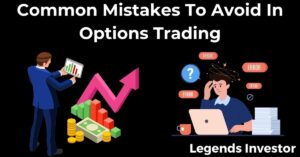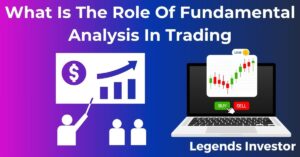Implied volatility’s a bit of a big deal in the world of finance. It’s basically a forecast of a stock’s potential moves, giving traders a hint at how wild things might get. Unlike historical volatility, which looks at past prices, implied volatility peeks into the future, making it crucial for those trading options.
Now, here’s what makes implied volatility such a showstopper: when you’re trading options, you’re not just making bets on a stock’s price going up or down, but also on how much you think that price will swing. That’s where implied volatility steps in as the unsung hero, or the villain, depending on how you look at it.
Understanding the difference between implied and historical volatility can be a game-changer for any trader. While historical volatility’s all about what’s happened already, implied volatility deals in what might happen next, offering a glimpse into market sentiment and expectations. It’s like having a weather forecast for the financial markets.
Why does this matter? Because implied volatility is packed with info about potential price swings. In options trading, knowing whether the market’s expecting a calm or a stormy time can majorly impact your strategy. The higher the implied volatility, the higher the option premiums, meaning you might pay more for those options or stand to make more from them.
How Implied Volatility is Calculated
Getting down to the nuts and bolts of how implied volatility is calculated, it’s all tied up with a bunch of market factors and some pretty intricate math. Seriously, there’s no crystal ball, just some hefty statistical models like the Black-Scholes model that traders lean on to crunch the numbers.
What influences these calculations? Stuff like market supply and demand, interest rates, and the current price of the stock. But remember, it’s not just the figures that matter; market sentiment plays a massive role too. If traders as a whole start thinking the market’s about to jump or dive, you can bet that’ll get baked into the calculations.
Mathematical models, like Black-Scholes, help figure out implied volatility by looking at current market prices of options. These models are essentially like financial wizards behind the curtain, taking into account time value, strike prices, and the underlying asset’s price. They’re not always perfect, but without them, we’d be a little lost.
Market sentiment comes into play big time. When traders are collectively feeling jittery, perhaps expecting a big market shake-up, implied volatility can skyrocket. It’s a living pulse of how expectations ebb and flow, and it can be just as emotional as logical.
Knowing how calculations are made is pretty epic because it gives you the low-down on whether option prices are fair, too high, or even a steal. Keeping one eye on the math and the other on market whispers could help you make smarter moves in the trading game.
Implied Volatility and Options Pricing
The relationship between implied volatility and options pricing is like a suspense thriller—unpredictable yet fascinating. When looking at options, you’re essentially making a bet on how much a stock’s price will move. Here, implied volatility acts as the heartbeat of this bet, dictating how pricey things get.
When implied volatility jumps, so does the price of options. This is because higher volatility means there’s a greater chance of big price swings, which can lead to a bigger payout if you’re holding the right option. Think of it like paying more for a lottery ticket when the jackpot’s massive—it’s all about potential payoff.
Then there’s the ‘volatility smile,’ a phenomenon where at-the-money options have lower implied volatility compared to in- or out-of-the-money options. It’s basically a graph showing a smiley face where the ends curve up, and it tells traders where expectations are leaning.
Understanding this relationship can be a real asset. Option prices don’t just reflect a stock’s possible upwards or downwards movement but its potential sway by double, triple, or even more. So, the trick’s knowing if you’re paying too much based on what the market really thinks will happen with implied volatility as your guide.
Armed with this knowledge, you can predict potential price movements better and tweak your strategy. Whether selling high-priced options when volatility’s up or snapping up cheaper ones when the market’s calm, understanding this dance can help you stay ahead.
The Role of Implied Volatility in Hedging Strategies
Implied volatility isn’t just for the risk-takers; it’s a key tool for the risk managers, too. In the world of hedging, understanding volatility’s ins and outs is fundamentally important for crafting strategies that manage risk effectively.
When you’re knee-deep in volatile markets, options aren’t just speculative tools. They double as insurance policies, allowing you to protect against big, unwanted price swings. This is where implied volatility steps in, offering insights into how expensive those protective measures might be.
Creating delta-neutral strategies is one way traders hedge risk. They adjust positions based on movements in implied volatility to keep portfolios balanced and less reactive to market swings. Catching those shifts can mean everything, turning volatile periods into strategic opportunities.
Managing risk is also about knowing when to hedge. Using implied volatility, traders can decide if it’s a good time to put on their safety nets. If implied volatility is high, insurance might cost more, but it might be worthwhile if the potential for a big market move looms.
The strategies don’t stop there. For traders dealing with stocks that love to bounce around, implied volatility helps identify when to hedge and when to let profits ride. Pairing volatility insights with hedging tactics can steady the ship through choppy financial waters.
Impact of Implied Volatility on Options Premiums
Implied volatility is a powerhouse that impacts options premiums directly. When volatility shoots up, so do the premiums. It’s a straightforward cause and effect: higher potential price swings boost the potential for gain, so options become pricier.
Take, for instance, when there’s market buzz about earnings reports or major economic events. You might see implied volatility climb as expectations for big price moves set in. This anticipation is reflected in higher premiums, impacting both buyers and sellers. Buyers might pay more to catch these big swings, while sellers could earn more in premium, albeit with greater risk.
Seeing a real-world example helps. Think of a suddenly popular tech stock with loads of hype. The implied volatility rises because traders expect the stock to move erratically post-news. If you’re holding existing options contracts, this boost in implied volatility can increase their market value, especially if you’re looking to sell.
Adjusting your strategy when implied volatility is all over the place can seem daunting. But it’s all about timing and making informed choices. If you spot an increase in volatility early, you might choose to sell options at a higher premium. On the flip side, during stable periods, you might buy options anticipating a volatility spike later.
Just remember, higher premiums mean the market expects fireworks. It’s on you to decide whether to play it safe or go in big. And that’s where knowing the ropes of implied volatility can give you a leg up.
Understanding the ‘VIX’ – The Volatility Index
The VIX, often dubbed the “fear gauge,” provides a real-time snapshot of the market’s expectations for volatility. It’s directly tied to implied volatility, reflecting traders’ collective anticipation of market moves over the next 30 days.
A high VIX value signals high uncertainty or fear of significant market swings, which traditionally sends shockwaves through options pricing. Normally, when market turmoil is brewing, the VIX is where traders look to measure just how unsettling things might get.
The VIX is constructed using S&P 500 index options and represents the market’s best guess of future volatility. When you see a sudden spike in the VIX, it’s like a siren for traders, marking possible turbulent times ahead. This could mean juicier premiums on options, thanks to heightened perceived risk.
Using the VIX as a sentiment gauge can steer trading strategies. If the VIX is low, the market’s in chill mode, and options might be cheaper. Alternatively, a high VIX can suggest it’s time to reconsider hedging strategies or rethink positioning.
Being savvy with the VIX offers an edge, allowing you to interpret shifting market conditions. It’s not just about knowing if the market feels jittery; it’s about forecasting how that sentiment will affect trading decisions today and tomorrow.
SEO-Based Approach: Integrating Transparency and Value
When it comes to creating content that resonates with readers, putting people first is key. While SEO is crucial for visibility, it’s the quality and trustworthiness of the content that keep readers engaged. This is where the principles of Experience, Expertise, Authoritativeness, and Trust (E-E-A-T) come into play.
People-first content prioritizes the user’s needs and provides clear, direct answers to their questions. Charting a course away from keyword-heavy jargon, the focus should be on delivering relevant and insightful information that genuinely helps the reader.
Incorporating transparency and value into your content means giving readers access to your expertise and insights without clutter. It’s about creating a seamless flow that guides them through complex topics, such as implied volatility, in a way that’s straightforward and easy to digest.
Balancing E-E-A-T with SEO requires a fine touch—like seasoning a dish just right. Write in a way that’s naturally engaging and helpful. Make sure search engines can easily pick up on content quality indicators without having to compromise on clarity or depth.
The ultimate goal is to build trust. When readers see that your knowledge is both deep and approachable, they’re more likely to return. Investing in content that prioritizes user experience not only boosts trust but also enhances your search engine rankings naturally.
Practical Applications of Implied Volatility in Real Trading
Learning how to leverage implied volatility in the trading world isn’t just for the pros—it’s a tool everyone can tap into with the right know-how. Real-world examples offer a peek into how successful traders utilize this metric to shape their strategies.
Consider a scenario around major company earnings announcements. Traders anticipating sharp price movements due to these announcements will analyze implied volatility to decide whether to buy options. It can guide their choices on selling strategies if they predict volatility will drop post-announcement, allowing them to capitalize on inflated premiums beforehand.
Implied volatility also adapts well under different market conditions. In highly volatile markets, traders might use it to open or adjust straddle positions, which are options positioning themselves to profit from large price swings in either direction.
Looking at past market events can also shed light on the benefits of understanding implied volatility. Studying instances when markets reacted strongly to external happenings—say political events or economic reports—can reveal how these movements were presaged by changes in implied volatility patterns.
Success comes from being observant and using volatility as a compass. By keeping an eye on implied volatility shifts, traders can align their strategies with market actions and sentiments, leading to more informed and potentially profitable decisions.
Conclusion: Embracing Volatility for Informed Trading
In the ever-fluid world of options trading, embracing implied volatility can transform potential uncertainty into a strategic advantage. It’s not just about reading the market; it’s about using that knowledge to make calculated decisions.
Mastering volatility is like learning to dance with the market’s rhythm. With implied volatility as your guide, you gain a deeper insight into price movements and can craft trades that align with your risk tolerance and market outlook.
The power of implied volatility lies in its ability to foreshadow market fluctuations. By understanding its signals, you not only safeguard against unexpected market shifts but also position yourself to seize opportunities where others might see only risk.
As markets continue to evolve, the trends in volatility offer a wellspring of opportunities for the savvy trader. Staying informed and flexible allows you to navigate these dynamics with confidence, turning market trends into personal trading triumphs.



